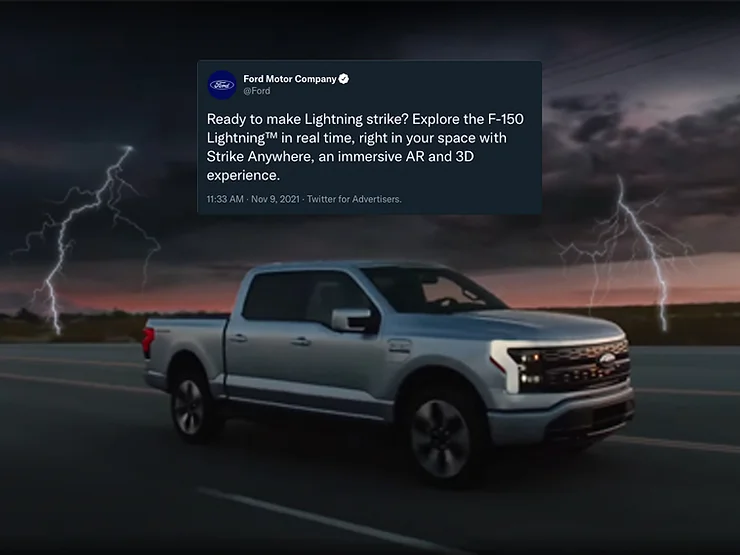Persuading your target market can be tricky — or nearly impossible, writes Senior VP Kirk Dorn. The best approach Keep it simple and consistent.

To borrow from Abraham Lincoln, “You can convince all the people some of the time and some of the people all the time, but you cannot convince all the people all the time.”
OK, I know the word he used was “fool,” but we don’t want to be quite that cynical here at Ceisler Media. Two recent examples show how spot-on Honest Abe was in predicting how successful or frustrating it can be to try to get buy-in from most people in your targeted audience.
Success, of course, is the preferable option. So let’s start with the current ad campaign for the Ford F-150 Lightning, an electric version of the iconic pick-up truck.
The target audience for this vehicle is made up of people who drive pick-ups. So what do the ads sell? Power, acceleration and hauling capacity.
In one commercial, lightning illuminates the night while the truck hauls a helicopter through a mountain range — and then shows up at a construction site. Narrator Bryan Cranston authoritatively boasts that the F-150 “feels like a bullet train and works like a freight train.”

Sales orders are off the charts, and the trucks aren’t even available yet. Had Ford emphasized the green benefits of electric vehicles in its messaging, I’m betting sales would not be as robust. Are they fooling their target audience some of the time?
The other side of the coin is the campaign aiming to change the minds of folks declining the COVID-19 vaccine. When it comes to this audience, no one seems to have found the magic message to move them.
Consider the recent case of a woman awaiting a kidney transplant in Colorado.
Citing her religious beliefs, she refused to accept the COVID shot, which her doctors told her was required before they could proceed with the operation. She trusted the doctors to perform life-saving surgery on her, but did not trust those same doctors when it came to accepting the vaccine.
As the recipient of a new heart, I can testify doctors put a patient through a lot before they determine if he or she can receive a transplant. And in most cases, people are willing to do whatever doctors ask, to let them save your life. But no matter how compelling the message, you can’t convince all the people all the time.
Perhaps those Colorado doctors should offer the kidney patient a free F-150 Lightning and see if that would do the trick.
It’s the oldest axiom in the communications book, but if you want to get through to your audience, keep it simple and, I would add, consistent.
The best example in the modern era is GEICO’s ad campaign. The company has brilliantly used comedy to capture our attention for 17 years with everything from their trademark reptile to a caveman to a family unsuccessfully trying to eat in vibrating chairs around the dinner table.
But every commercial, no matter the skit, includes the kicker, “15 minutes can save you 15 percent or more on car insurance.” The reality is you can save on car insurance by shopping around and switching to any number of companies, but GEICO has successfully convinced a lot of people to sign on with them just because of a simple, consistent message.
The lesson for organizations and government entities is clear. You must decide what you stand for and then be able to consistently explain it on sound bites. One of the first things we ask at Ceisler Media when we engage with clients is, what is your purpose and how can that be conveyed in the simplest way possible?
Figuring that out can be complicated. But the final product must be simple.
By the way, last time I checked, the kidney patient in Colorado was still shopping for a hospital to perform her transplant without a vaccine. “Time is running out” seems like a simple and compelling message — but this case just proves even the strongest and simplest message can’t convince everyone.
Kirk Dorn is a Senior Vice President at Ceisler Media’s Philadelphia office.



